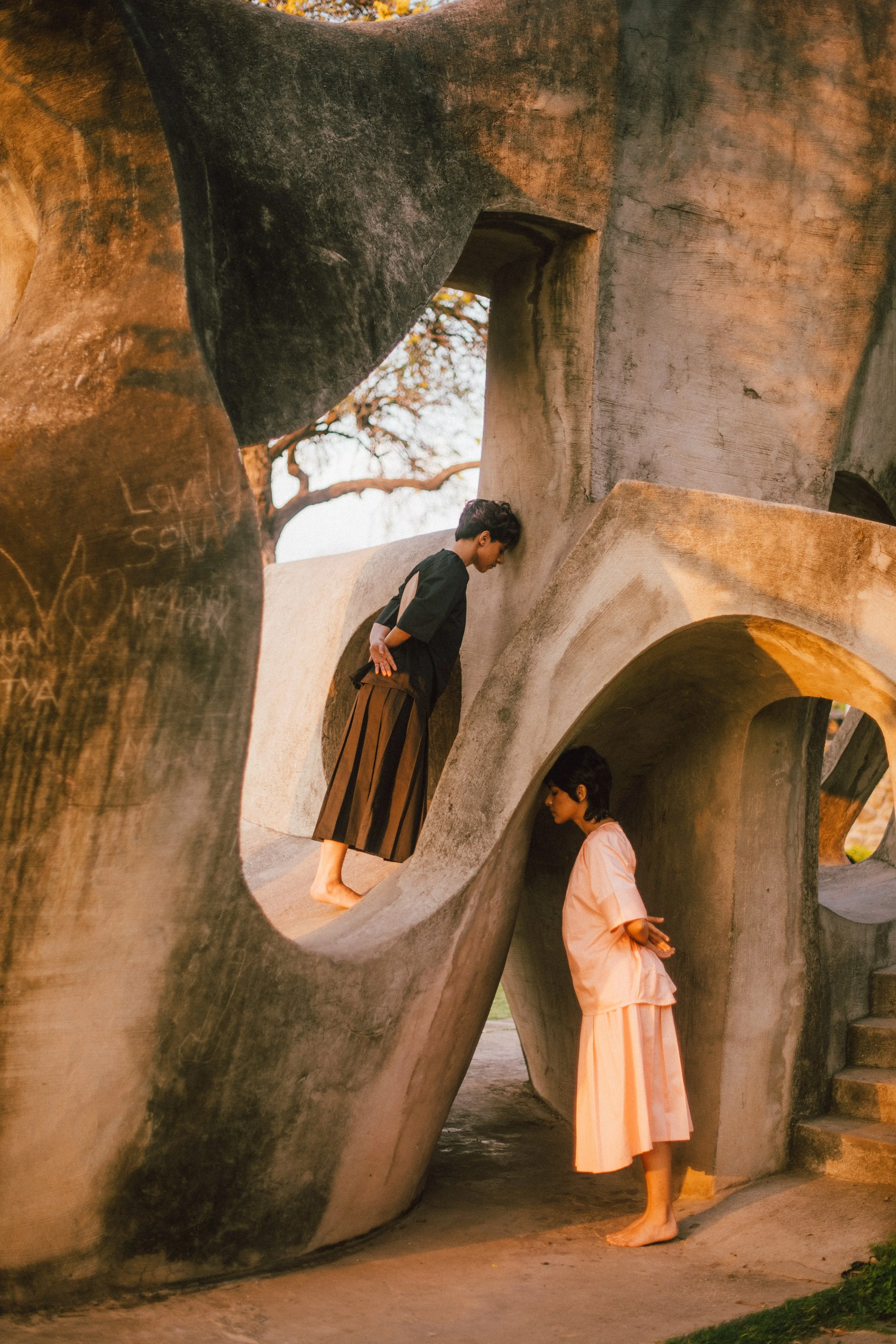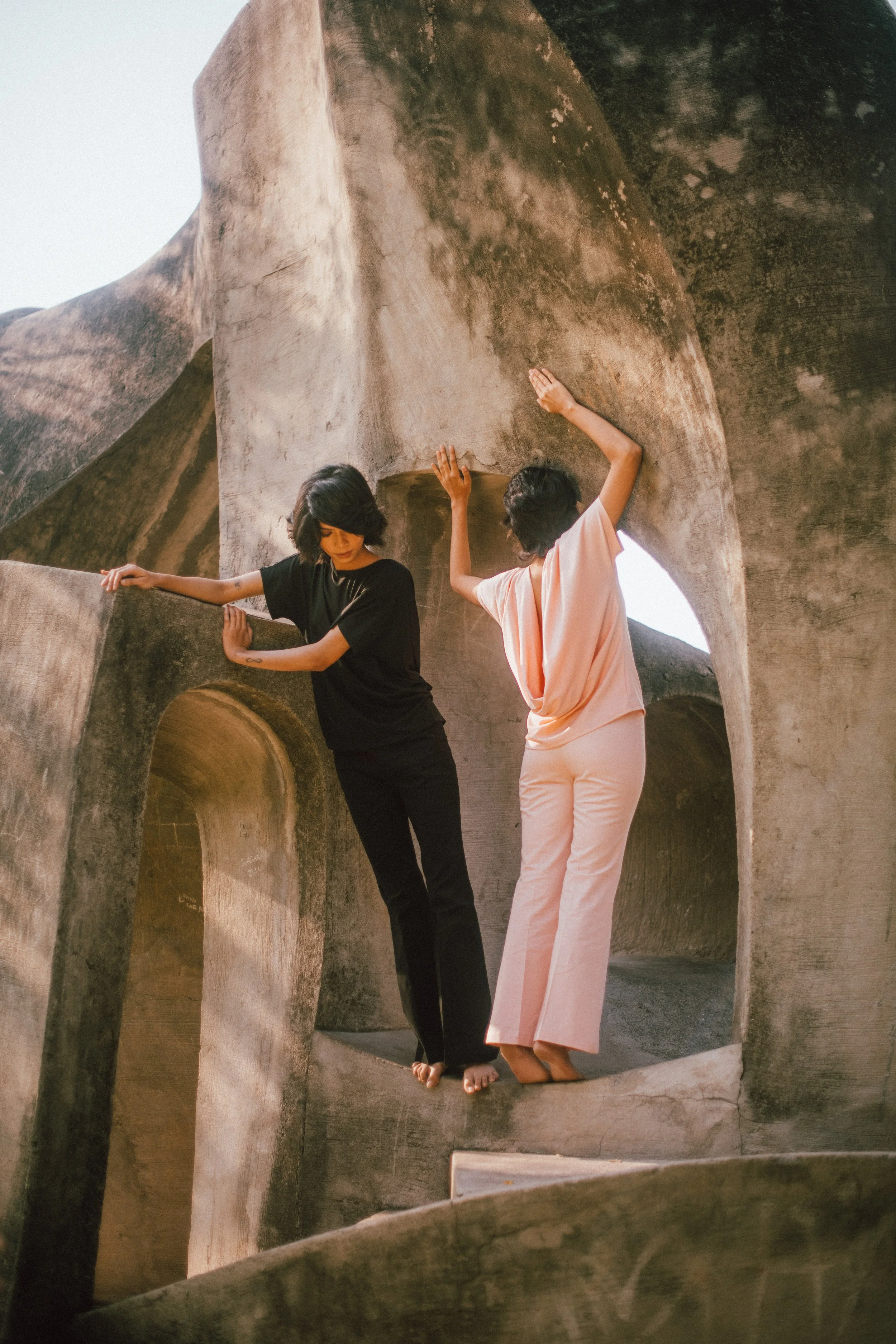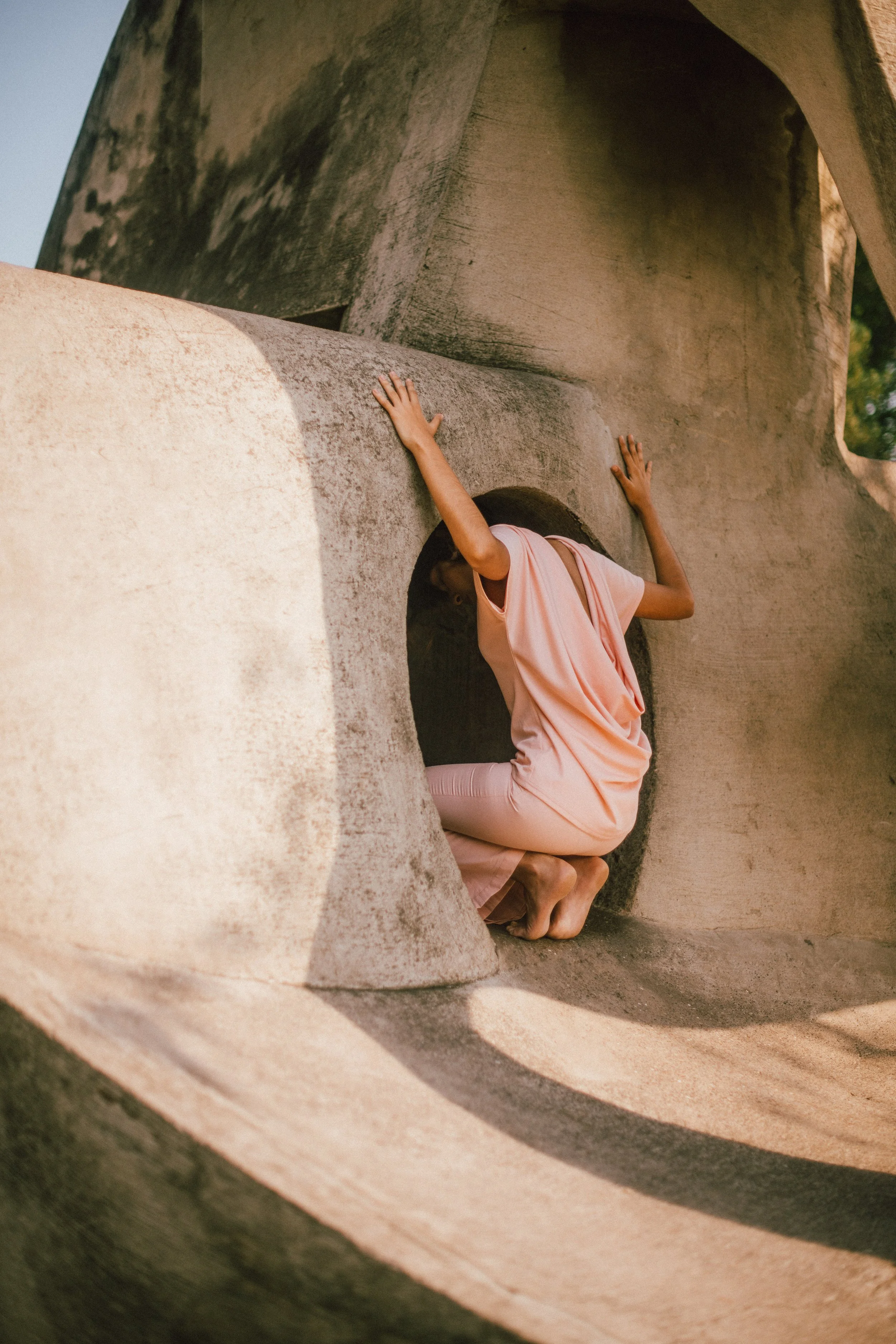FOUR IN A O: Outside the box
‘We wanted to create with a sense of freedom, and for those who rebel against the norms to fight for their own voice and expression.’
Four. Everything that humanity can define fits neatly in a four-sided box. Four physical elements. Four seasons. Four directions. To the contrary, a circle symbolises oneness. A spiritual realm that is infinite and whole. The emblem of natural balance.
Four In A O is a trailblazer in challenging the societal boxes we are placed in, breaking free from conventional constraints, and paving the way for a future where clothing transcends gender boundaries.
The conceptual yet wearable label opens the door to limitless self-expression and seeks to empower people to express themselves authentically with their clothing. The avant-garde brand strives to ‘square the circle’, creating garments that strike a harmonious balance between tradition and functionality.
For our readers that aren't familiar with 'FOUR IN A O' , could you outline the philosophy behind the brand, its origins and how it was born?
The central idea of the brand is to think outside the box. Society is quick to label, box and stamp without realising the restrictions these judgements enforce on people. We wanted to create with a sense of freedom, and for those who rebel against the norms to fight for their own voice and expression. Our logo is a circle that exceeds a box; an expression both complete and infinite. The name is the worded version of our logo.
You have just released your second collection, 'Duality', could you speak to us through your main mission you are trying to convey in this collection?
Every collection at the studio begins with a series of questions, and an intent to answer them through our work. When we released our first collection, we were asked on numerous occasions if we defined ourselves as a ‘couture or t-shirt brand’. In India, the former is represented by bridal wear brands while the latter is represented by brands that tailor their design language to fit the box of a t-shirt and appeal to the new age consumer.
We were neither and we wanted to create a collection that bridges the gap between these two polarities. A collection that expresses a certain duality and addresses questions like - why can a t-shirt not integrate the craftsmanship of couture garments or why couture garments cannot be as comfortable as a t-shirt. The outcome was an expression of this duality, and hence the name.
The last collection was shot in Chandigarh and you describe the collection 'as a love letter to Chandigarh' - could you speak to us more about the city of Chandigarh and the influence it has had on modern India and the brand?
Chandigarh was India’s first planned city, post independence. It was a symbol of India’s freedom and a strong expression of its faith in the future - themes that resonate with the ethos of the brand. The city was designed as a collaborative project by the pioneer of modern architecture - Le Corbusier and a team of Indian architects. They achieved fluid forms using the most common building material, concrete, and we translated those shapes to garments using only cotton throughout the collection, the most widely used fabric.
How do you approach designing fashion that goes beyond traditional gender norms and allows individuals to express their unique identities and fluidities through clothing? What role does inclusivity and diversity play in shaping your design philosophy?
We design each garment with an idea in mind and not the gender of the wearer. Clothing is an everyday expression and speaks uniquely for the wearer. It is a painting we make every day. Now imagine an alternative reality where Frida Kahlo was told that she cannot paint with specific tones because they are more masculine or one where Raphael was told to never use pink. It would stop the creation of countless masterpieces.
Garments, like colours, cannot be boxed by gender norms. Of course, certain products have to be made factoring our specific size chart to be commercially viable but we offer our customers the option to select a custom size in any garment they like and we do it at no additional cost.
What are your thoughts on the evolving landscape of luxury fashion in India? How do you see the Indian fashion industry shaping up in the coming years, and what role do you believe it will play on the global fashion stage?
The Indian consumer is now more informed and conscious of what they choose to wear. There is also a market-wide shift in preference for Indian brands that are offering a fresh visual language. Our craftsmanship is applauded globally. Fashion’s biggest heritage brand did a runway show in India and Indian designers are exhibiting phenomenal work on the Paris runway. Undoubtedly, our nation is gaining a stronger voice on the global fashion stage.
How has your Indian heritage impacted your design process and what influences when finding inspiration for your collections? You previously spoke about artist Amrita Sher-Gil, being a big influence. Can you share specific instances or collections where her work played a significant role in shaping your designs?
Amrita Sher-Gil came from an affluent family and expressed a deep curiosity and empathy for the underprivileged. She moved back to India from Europe because of her inner urge to engage with the rhythm of rural life in India. She painted the life of people and her surroundings with an intensity that remains unparalleled in modern Indian art.
Our products draw inspiration from our surroundings. Double Shirt was derived from an autorickshaw driver wearing a shirt over a shirt in the early months of winter to block the cold. Pocket Shirt was a play on internal hand stitched pockets observed on garments of the poor to secure all their belongings.
Reverse Bomber Jacket originated from noticing bikers wearing jackets in reverse to secure themselves from the wind. We treat streetwear quite literally.
To wrap things up, what does the future hold for FOUR IN A O?
Universal Design.
Images courtesy of Farheen Fatima




